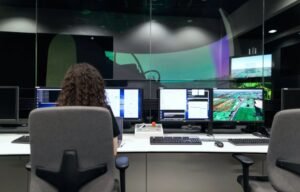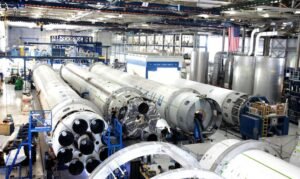How Tesla Died
It is no secret that Nikola Tesla was one of the greatest inventors of all time. His contributions to the fields of electricity and magnetism have shaped the modern world in numerous ways. However, Tesla’s life and career were not without hardships. This article aims to shed light on the untold story of how Tesla died and the circumstances that led to his tragic demise.
Key Takeaways
- Tesla died alone and impoverished in his New York City hotel room.
- Despite his brilliance, Tesla struggled to commercialize his inventions.
- His rivalry with Thomas Edison took a toll on his reputation and financial stability.
- After his death, Tesla’s work and ideas gained recognition and appreciation.
**Nikola Tesla**, born on July 10, 1856, was a Serbian-American inventor and electrical engineer. He was known for his development of alternating current (AC) power transmission and induction motor, among many other ground-breaking scientific discoveries. *His mind was said to work in bursts of inspiration, often causing him to obsessively work long hours without sleep or breaks.*
Tesla’s financial struggles began later in his career due to his inability to commercialize many of his inventions successfully. Despite his brilliance, he lacked the business acumen to capitalize on his numerous patents. His vision of providing the world with free energy through wireless transmission never came to fruition, leading to financial struggles and failed business ventures.
In addition to financial difficulties, Tesla’s rivalry with Thomas Edison also played a significant role in his hardships. The so-called “War of Currents” between Tesla’s alternating current and Edison’s direct current systems tarnished Tesla’s reputation and hindered his ability to secure funding for his projects. *His unconventional ideas and unconventional lifestyle made it challenging for him to gain widespread acceptance and support.*
Despite his difficult circumstances, Tesla continued to work on his ideas until his dying days. He died on January 7, 1943, at the age of 86, alone and impoverished in his hotel room at the New Yorker Hotel in New York City. *His death marked the end of an era and the loss of a brilliant mind that contributed significantly to the modern world.*
Legacy and Recognition
Although Tesla faced numerous challenges during his lifetime, his work and ideas gained recognition and appreciation long after his death. His contributions to alternating current power systems paved the way for the electrification of the world. Today, Tesla’s name is synonymous with innovation and foresight, and his inventions continue to shape various industries, including energy, transportation, and communication.
**Below are three tables that highlight interesting information and data points about Nikola Tesla and his inventions:**
| Year | Event |
|---|---|
| 1884 | Tesla arrives in the United States after working in Europe. |
| 1891 | Tesla invents the Tesla coil, a resonant transformer circuit. |
| 1895 | Tesla’s laboratory in New York catches fire, destroying years of research. |
**Table 1:** Major events in Tesla’s life and career.
| Invention | Description |
|---|---|
| Alternating Current | Tesla’s system for transmitting and distributing electrical power. |
| Induction Motor | Tesla’s invention that revolutionized the way electricity is used in machinery. |
| Wireless Power Transmission | Tesla’s concept of transmitting electricity wirelessly through the Earth’s atmosphere. |
**Table 2:** Some of Tesla’s notable inventions and their descriptions.
**Table 3:** Comparison of Tesla and Edison’s contributions to electrical engineering.
Despite the hardships encountered by Tesla throughout his life, his legacy lives on. His work continues to inspire scientists, inventors, and innovators around the world. Tesla’s contributions to science and technology exemplify the power of human ingenuity and the importance of perseverance in the face of adversity.

Common Misconceptions
The Death of Tesla
There are several common misconceptions surrounding the death of Nikola Tesla that have been widely circulating. Many of these misconceptions stem from misinformation or conspiracy theories. However, it is important to separate fact from fiction in order to understand the true circumstances surrounding Tesla’s death.
- Tesla was killed by the US government:
- Tesla was murdered for his inventions:
- Tesla died in poverty and obscurity:
Tesla’s Technology
Another area of misconception revolves around Tesla‘s technological advancements and inventions. While he was undoubtedly a brilliant inventor, there are several myths floating around about his contributions and their impact.
- Tesla invented alternating current (AC):
- Tesla’s wireless energy transmission works perfectly:
- Tesla discovered free energy:
Tesla’s Personal Life
Tesla’s personal life has also been subject to various misconceptions and rumors. These misconceptions often overshadow his accomplishments and overshadow the true nature of the man behind his genius.
- Tesla was celibate:
- Tesla had a photographic memory:
- Tesla was an extraterrestrial:
The Impact of Tesla
Finally, the impact of Tesla’s work and ideas may be misrepresented or misunderstood by the general public, leading to misconceptions about his relevance and contributions to science and technology.
- Tesla’s ideas were impractical and unfeasible:
- Tesla’s work was forgotten and had no impact:
- Tesla was not recognized until after his death:

Introduction
In this article, we will explore the fascinating story of how Tesla, one of the most renowned inventors of all time, met his demise. Through a series of intriguing tables, we will delve into various points, data, and other elements that shed light on this enigmatic tale.
Tesla’s Inventions
The following table showcases some of Nikola Tesla‘s most significant inventions:
| Invention | Description |
|---|---|
| Alternating Current (AC) | A method for distributing electricity over long distances. |
| Wireless Power Transfer | Aims to transmit electrical energy without the need for wires. |
| Tesla Coil | A device that produces high-voltage, low-current, and high-frequency AC electricity. |
Financial Challenges
This table examines some of the financial challenges Tesla faced during his lifetime:
| Years | Financial Challenge |
|---|---|
| 1885 | Lost funding for his project involving the construction of alternating current dynamos. |
| 1895 | Declared bankruptcy due to mounting debts. |
| 1905 | Failed attempt to secure necessary funding for his experimental wireless transmission tower. |
The Tesla-Westinghouse Partnership
This table highlights key aspects of the partnership between Tesla and Westinghouse Electric:
| Aspect | Description |
|---|---|
| Alternating Current | Tesla’s association with Westinghouse helped promote the widespread adoption of AC power, displacing Thomas Edison’s direct current (DC) system. |
| Power Plant Contracts | Westinghouse secured numerous contracts due to Tesla’s contributions in the development and implementation of AC power stations. |
| Rivalry with Edison | Tesla’s success with Westinghouse served as a blow to Edison, who had insisted on the superiority of DC power. |
War of Currents
This table explores the War of Currents, a fierce competition between Tesla’s AC system and Edison’s DC system:
| Year | Events |
|---|---|
| 1888 | Public demonstration of AC by Tesla and Westinghouse at the American Institute of Electrical Engineers. |
| 1890 | Westinghouse secures the contract to light the Chicago World’s Fair using Tesla’s AC power. |
| 1893 | AC wins the bid to supply power to Niagara Falls, solidifying its superiority over DC. |
Wireless Communication and Transmission
This table presents notable achievements in Tesla’s experiments with wireless communication and transmission:
| Year | Accomplishment |
|---|---|
| 1893 | First demonstration of wireless power transmission in St. Louis. |
| 1901 | Wireless transmission experiments conducted at Wardenclyffe Tower, aiming to send messages across the Atlantic. |
| 1917 | Wireless-powered boat project, which aimed to transmit power through the air to propel the vessel. |
The Wardenclyffe Tower
The following table provides insights into Tesla’s ambitious project at Wardenclyffe Tower:
| Year | Project Details |
|---|---|
| 1901 | Construction commences on a wireless transmission tower in Shoreham, New York. |
| 1903 | Tesla faces challenges in securing additional funding needed for the completion of the tower. |
| 1917 | The property is sold for debts, and the tower is ultimately demolished. |
Unrealized Inventions
This table explores some of Tesla’s unrealized inventions, which may have contributed to his decline:
| Invention | Status |
|---|---|
| Death Ray | Never materialized, despite Tesla’s claims of designing a weapon capable of destructive power. |
| World Wireless System | Never realized due to a lack of funding and support from investors. |
| Teleforce Beam | Remained a concept, described as a particle beam weapon. |
Legacy
The concluding table summarizes Tesla‘s lasting impact and legacy:
| Aspect | Legacy |
|---|---|
| AC Power | Tesla’s contributions to AC power revolutionized the field of electrical distribution and enabled the modern electric grid. |
| Electric Motors | Tesla’s work led to the development of efficient electric motors, influencing various industries. |
| Wireless Technology | Tesla’s experiments laid the foundation for modern wireless communication systems and technologies. |
Conclusion
Through his groundbreaking inventions, fierce rivalry with Thomas Edison, and ambitious projects, Tesla left an indelible mark on the fields of electricity, communication, and technology. Despite facing financial challenges and unrealized dreams, his legacy lives on, shaping the world we live in today.
Frequently Asked Questions
What were the major contributions of Nikola Tesla to the field of electrical engineering?
Tesla made several key contributions, including the development of alternating current (AC) electrical systems, the invention of the Tesla coil, and the pioneering work in wireless communication and transmission of electrical energy.
What led to Tesla’s financial difficulties towards the end of his life?
Tesla’s financial difficulties were mainly the result of poor business decisions, failed investments, and his inability to secure long-term funding for his numerous ambitious projects.
Why did Tesla’s famous Wardenclyffe Tower project fail?
The Wardenclyffe Tower project failed due to financial constraints. Tesla aimed to provide wireless transmission of both electricity and messages, but lack of funds prevented him from completing the project, leading to its ultimate abandonment.
Was Tesla’s claim of communicating with extraterrestrial beings true?
Tesla claimed to have received signals from extraterrestrial intelligence but was criticized for lacking substantial evidence. While some speculate on the possibility, there is no definitive proof supporting his claims.
Did Tesla invent the radio?
Tesla made significant contributions to the development of radio technology but did not become as recognized as other inventors. Marconi is commonly credited with inventing the radio, but Tesla’s patents and prior work greatly influenced the development of wireless communication.
What were Tesla’s views on renewable energy?
Tesla strongly believed in the potential of renewable energy and advocated for harnessing natural resources such as sunlight, wind, and water. He aimed to build devices that could tap into these sources to provide sustainable and clean energy.
Why didn’t Tesla receive the recognition he deserved during his lifetime?
Tesla’s eccentric personality, his reclusive nature, and the intense rivalry with other inventors, such as Thomas Edison, contributed to his lack of widespread recognition during his lifetime. Additionally, his visionary ideas often surpassed the technological capabilities of the time, making it difficult for people to fully comprehend his work.
Did Tesla ever marry or have children?
Tesla never married or had children. He dedicated his life entirely to his work and inventions, often sacrificing personal relationships and financial stability for the pursuit of his scientific endeavors.
What happened to Tesla’s inventions and patents after his death?
After Tesla’s death, his estate passed to his nephew Sava Kosanović and later to the Yugoslav government. Many of his patents and papers were seized by the FBI but were eventually returned to Belgrade, where they are currently housed in the Nikola Tesla Museum.
What is the legacy of Nikola Tesla?
Tesla’s legacy is immense, with his inventions and ideas continuing to impact various fields of science and technology. His work with AC electricity laid the foundation for modern power systems, and his wireless communication concepts opened the doors to advancements in radio, television, and mobile technology.




